The Apple Macintosh at 40 – and my own Mac history at 24
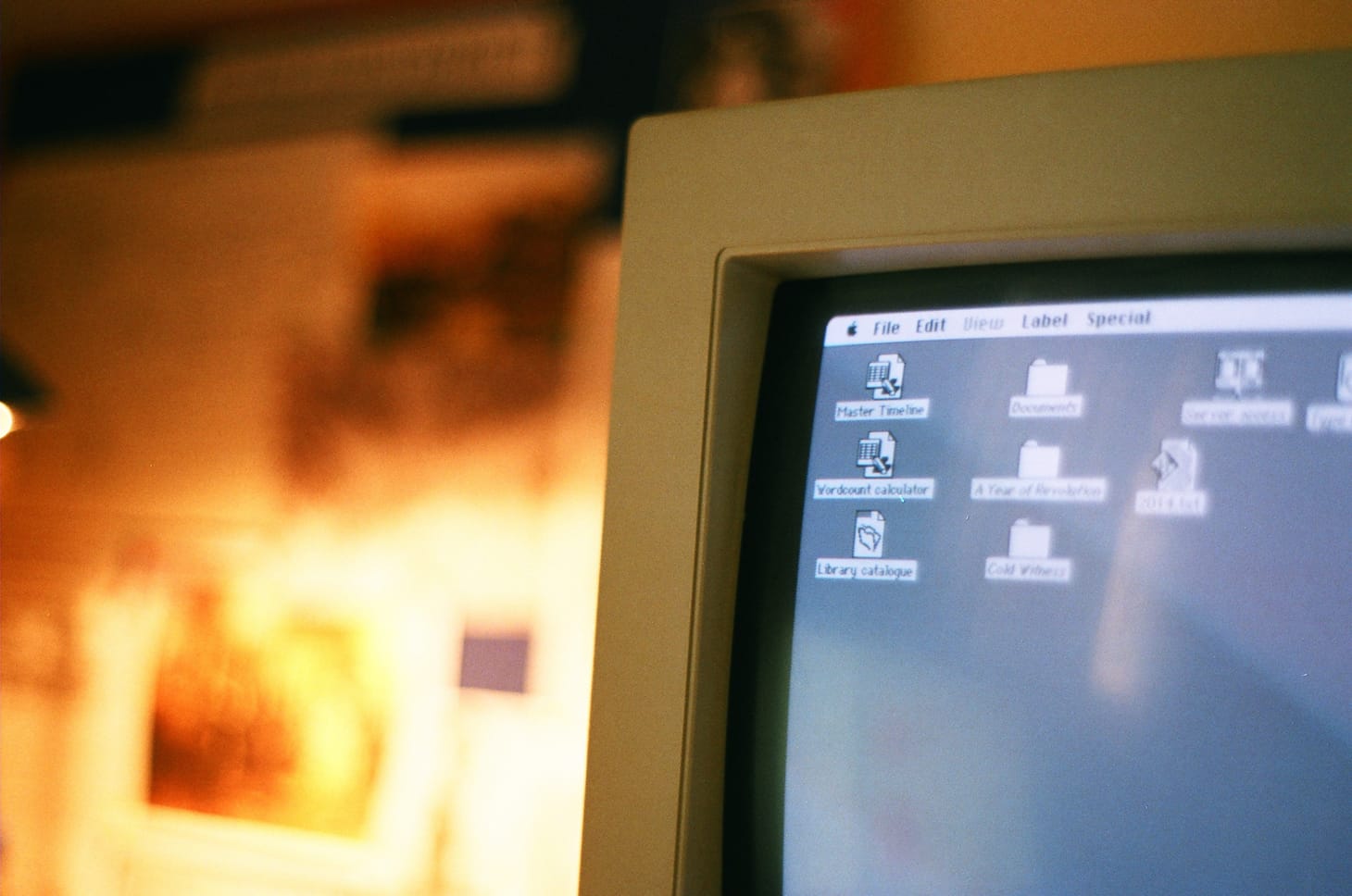
Cast your mind back to the year 2000. When the new century began, I was 13 years old. My interests: fantasy writing and computers. The Apple Macintosh may have come into the world two years before I was born, but it burst into my life that year – and played a key role in my early development as a writer. In this post I'd like to share a bit about my personal history with this remarkable tool.
A couple of days ago, the tech blogosphere erupted with articles about the 40th anniversary of the Macintosh, because January the 24th, 1984, was when the Macintosh 128K was first released. These articles fall into two broad categories. Some, such as Dan Moren's 'The Mac at 40: Iconic, indelible, immortal' for Macworld, explore how amazing it is that anything of the digital world can possibly survive for four decades. (Think about it for a moment. Windows the operating system has been in existence for almost as long as the Mac, but no Windows-based computer, or family of computers, has anywhere near this longevity. The Mac is the full stack. A Macintosh 128K from 1984 is the direct ancestor to an iMac M3 you can buy today. Thanks to a remarkable consistency of vision, they even look similar and work on identical principles. Conceptually they are the same device.) Other blog posts shared the writer's own personal relationship with the Mac, and that's where things get interesting – because the 'Bicycle for the Mind' is all about the empowerment of creative individuals.
I know that sentence sounded a bit Apple cultish, but please don't think that I'm about to blindly gush about how wonderful Apple is. I have many criticisms of Apple as it exists today, and many criticisms of the Mac specifically. I believe that it has wandered from the purity and simplicity of its original form. At various points I've been sufficiently disgusted with the Mac that I've given Windows a try again, and even Linux – but never for more than a year or two. Always I've come back to the Mac.
For me, as many things did back then, it started with an argument with my brother James.
Notes from my dad's diary
Whenever I want to find out what happened (and when) in our family between 1985 and 2018, I consult my dad's diary.
My dad died in 2018, but he kept a meticulous diary every day of his life between September the 1st, 1985, and four days before his death. For many years this diary was handwritten. He spent a good chunk of the late 1990s typing it into computerised form, first into a BBC Master microcomputer and later transferring it to the Evesham Vale PC we bought second-hand in 1999.
So this was the tech hardware situation at our house in late 1999: a big Windows 3.1 box in the spare room alongside the old BBC computer, which at that point I had pretty much taken over (but only used for programming and tinkering). I sometimes wrote stories on the Windows machine, but found it loud and hulking and slow. I found the operating system inelegant and overly complicated. Microsoft Word 2.0 was insufferable. Most of the time I preferred to write my stories by hand.
I had used Macs extensively at primary school for years, so was familiar with them. Our school had an entire lab of compact Macs (I think Classics, although my memory is fuzzy). But by 2000 my personal opinions were succumbing to peer pressure – because all my friends had PCs running Windows 98.
In January 2000 James and I were arguing about whether Apple Macs or IBM-compatible PCs were best. I'll let Dad take up the story:
Mon 10th Jan 00
Post-school dog walk in Gamlingay woods. For most of the way round the woods Alexander was discussing the merits and demerits of various computer systems with James, leaving me with virtually nothing to say. They are both much more knowledgeable on the subject than I am. Hardish frost then sunny & cool
Tues 1st Feb 00
The boys are very pleased with the computer printer [connected to the Windows PC] and are getting quite good at using the word processor. During this afternoon’s dog walk in Gamlingay woods they were passionately arguing the merits of Apple Macs versus IBM clones. James is the Apple fan while Alexander thinks they are ‘rubbish’. Dull Mild Heavyish rain started 1700 still falling at 2330
Mon 10th Apr 00
James's sore throat flared up again overnight. He was very unhappy at breakfast, with a headache added to the sore throat. We took Alexander to Dave Sewart’s this evening to collect the elderly Apple Mac computer that he has bought for £15. After all the arguments there have been between the boys about Apple Macs, now that he has got it going Alexander suddenly agrees with James: 'Apple Macs are cool'. Hazy sunny Cool breeze
This 'elderly Apple Mac computer' was a Macintosh SE, very similar to the computers I had used in the mid-1990s at primary school. Looking back, I find it amazing that Dave Sewart sold me this computer for £15. Although long obsolete by 2000 (the SE was released in 1987), it was still surprisingly capable in that era, especially if you didn't have the internet at home and your needs were basic. Its specs, by today's standards, are eye-opening:
- 8MHz processor
- 1MB RAM
- 20MB hard drive (actually an unexpected upgrade – the base model did not come with any form of built-in mass storage)
However, this little Mac spoke to me in a way the Windows PC never did. It was compact. It had a small, crisp, black-and-white screen that I found the perfect size for writing without distraction. It came with a Macintosh Extended Keyboard II (now widely regarded as one of the best keyboards ever made by any brand). Its operating system was simple, elegant, and just made sense. Best of all, it came with a copy of ClarisWorks 3.0, which I found a fantastic piece of software for writing.
This is when the magic started. I set up a little writing nook and started writing more often. My stories became longer and more ambitious. Within two months I was writing what would later become my first novel (never to be published, thank heavens).
Later that year, I decided that I wanted to save up for a Mac laptop:
Sun 6th Aug 00
The boys have stopped arguing about the relative merits of Apple Macs versus PC’s. James has finally worn Alexander down. Alexander has decided that he would prefer a Mac laptop to a PC laptop. He intends to phone Dave Sewart to see if he has anything on offer. Apparently, he will need a laptop for project work leading up to his GCSEs. James was quite magnanimous in his victory, allowing himself only a very small “I told you so”. Dull Very warm and sticky
Dave sold me a PowerBook 190 for £100. Released in 1995, this was slightly more up to date than the SE, but still antiquated even by turn-of-the-century standards. The specs:
- 33MHz processor
- 8MB RAM
- 500MB hard drive
- 9.5" greyscale LCD
I wrote hundreds of thousands of words on that laptop. Although I liked the fact that the screen wasn't colour – what would writers ever need colour for? – the greyscale LCD panel had poor contrast compared to the beautiful CRT of my desktop Mac, and it also suffered from ghosting. In fact, the screen was the weak point of this Mac – it only lasted a year before the screen failed. I replaced it with a PowerBook 190cs.
We bought several old Mac computers from Dave Sewart at this time. Dave was a friend of the family who rescued some of the obsolete 68K Macs being offloaded by businesses during the PowerPC transition. He always had a garage full of obsolete but perfectly serviceable Macs, and was always happy to sell them for a pittance to local children as a way of paying something forward to the next generation. In 2000 and 2001 we added a Macintosh LC and IIsi to the collection, setting them up on a long workbench Dad had constructed in the spare room (now the computer room). The IIsi was my personal favourite because it came with a black-and-white monitor.
The Evesham Vale PC, meanwhile, had been collecting dust for a while and was eventually sold. Dad bought his own Mac laptop in 2001.
Entering the modern era
By 2002, James and I wanted the internet at home, and we wanted a modern Mac we could use to run modern software. Over to Dad:
Frid 18th Jan 02
The boys have collected their new computer from Dave Sewart this evening. This time it is a new one. An iMac no less, which they have jointly paid for with an added contribution from us. They spent the rest of the evening setting it up and seeing what it would do. They are like a couple of dogs with multiple tails. Sharpish frost then sunny spells Mild Light rain after 1645
Wed 23rd Jan 02
We have finally gone on the Internet. I suppose it was inevitable with an iMac in the house. Alexander and James did the necessary this evening and can now use it for school work. They have been told that it must only be used for finding specific information and that browsing is not allowed. Strict time limits have also been agreed. Sunny spells & showers Mild
I think it says a lot for how much we trusted Dave Sewart's expertise that we ordered a new Mac through him rather than getting it direct from Apple! The iMac in question was a G3 in a fetching translucent shade of indigo blue. The specs:
- 500MHz processor
- 128MB RAM (some years later upgraded to 500MB)
- 20GB hard drive (many years later upgraded to 100GB)
- Built-in USB ports and CD-ROM drive (so modern!)
This computer was new, it was exciting, and it got the Roddies online. I find Dad's caution about the internet interesting. Of course, we were using an expensive, slow, and cumbersome dialup connection, so to some degree his rules were practical ones. But he was wary about the effect internet access would have on our attention and the way we spent our time. I've thought a lot about this over the years. To this day I struggle with the effects of the web on my attention and concentration, and in many ways I think Dad had the right idea back in 2002.
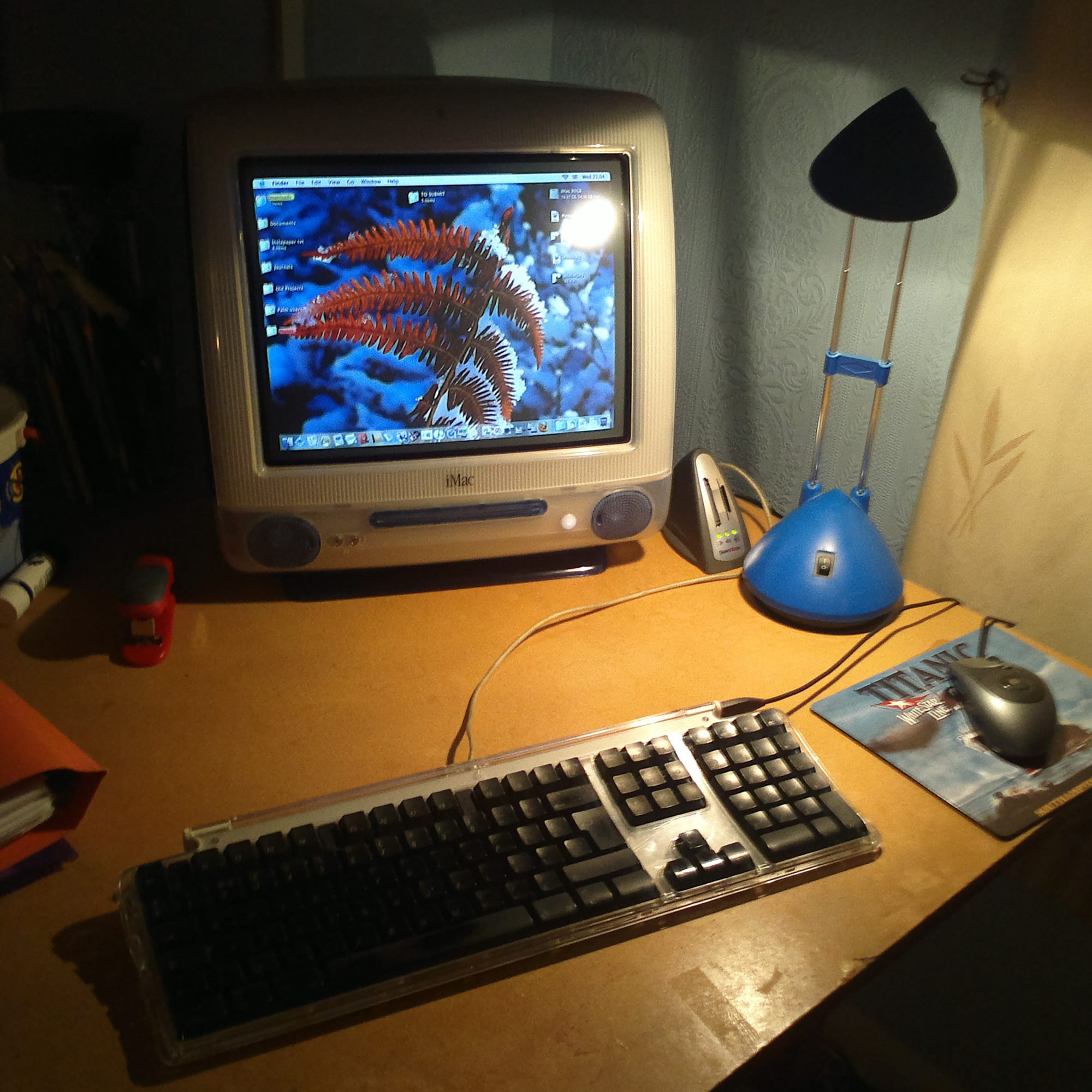
This iMac was our main family computer for many years. In 2005 Dad bought a Mac Mini for his own personal use, but the iMac just kept going long after James and I had left home. This thing's longevity was amazing. It started out running Mac OS 9, and was eventually upgraded to 10.1 and later 10.3. In 2011, it was still in working order but needed a bit of maintenance; I stripped it down and replaced a few parts, upgraded the hard drive, and then used it to write half a novel. Although it was struggling to get online by this point, it was still just as fast as it had been brand new.
In 2005, I went to university to study computing science, and decided that I needed another laptop. This time I selected an iBook G4 (the first white polycarbonate version). I actually got through two of these during my three years at uni, because the first one suffered logic board failure – a common problem caused by a design flaw. Quality issues aside, I loved these machines. It was a time when you rarely saw Macs in the wild, but when you did it was nice to feel like you were members of a special club. Only one other student on my course used a Mac – Cheryl – and I have fond memories of late-night coding sessions with her, surrounded by a sea of Windows computers.
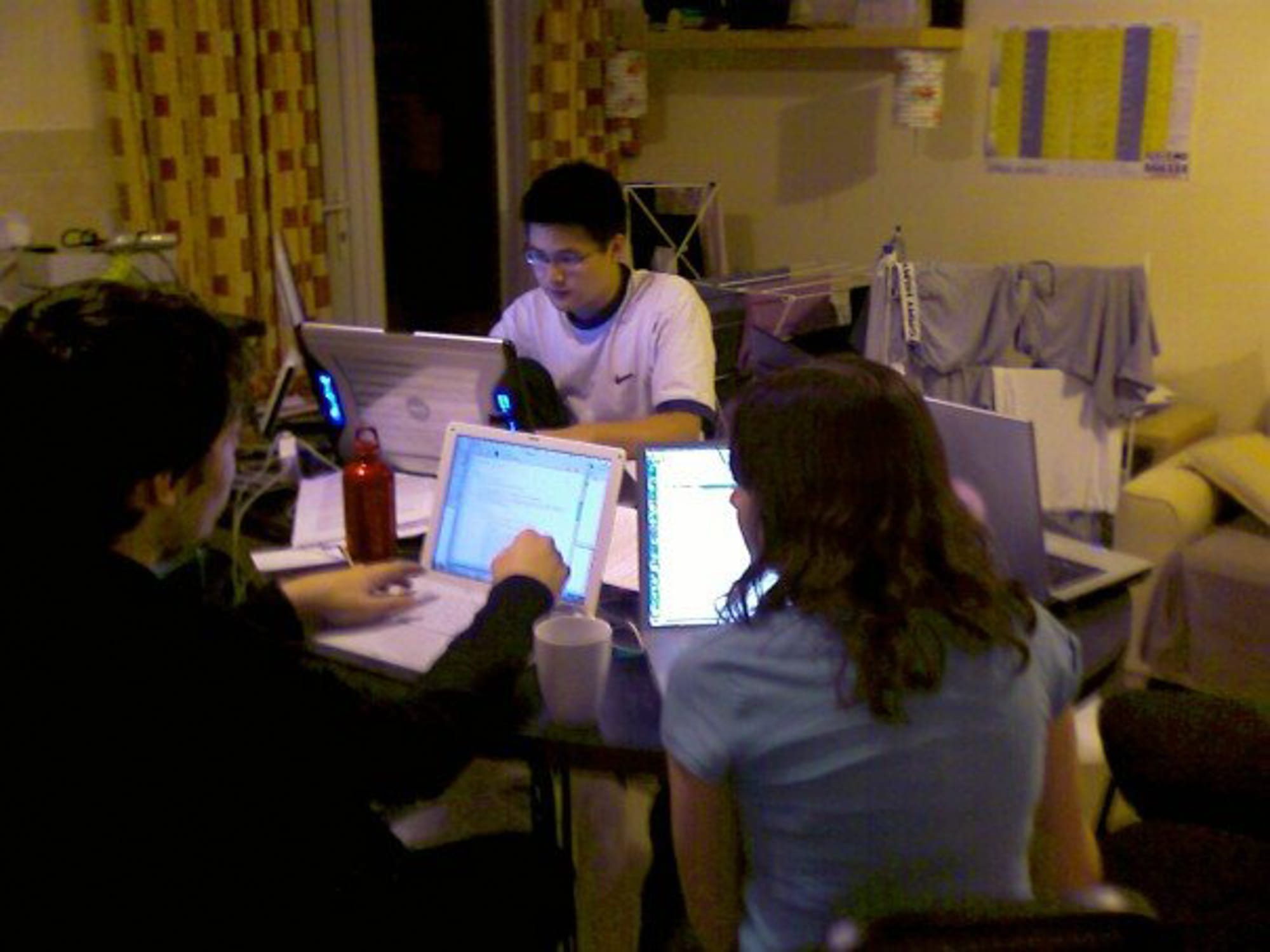
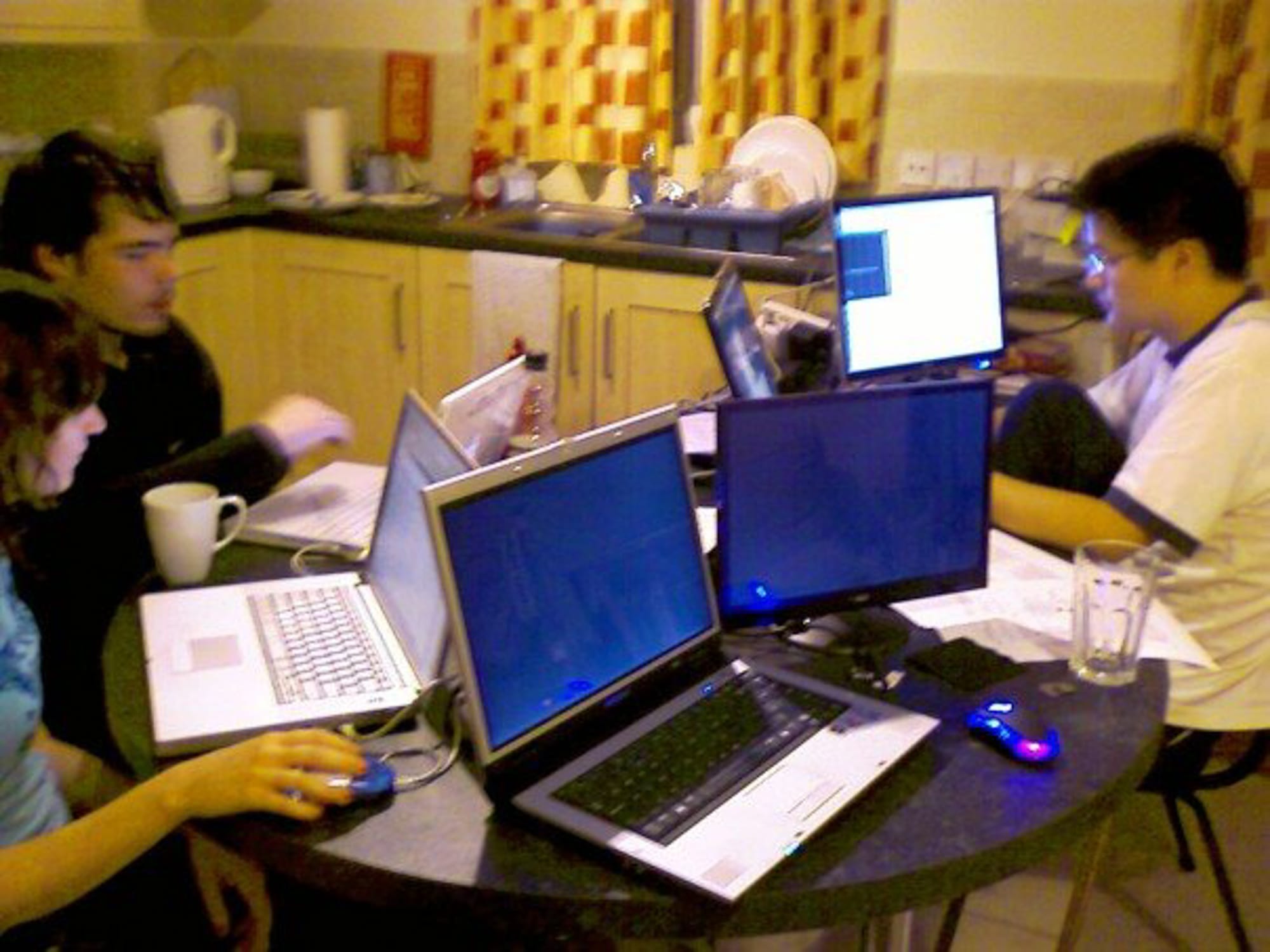
May 16th, 2006... at about 3am before a coursework deadline
I loved the white polycarbonate era of Apple laptops. After I outgrew the G4, I used an early Intel MacBook for a number of years, and wrote a lot of fiction on it.
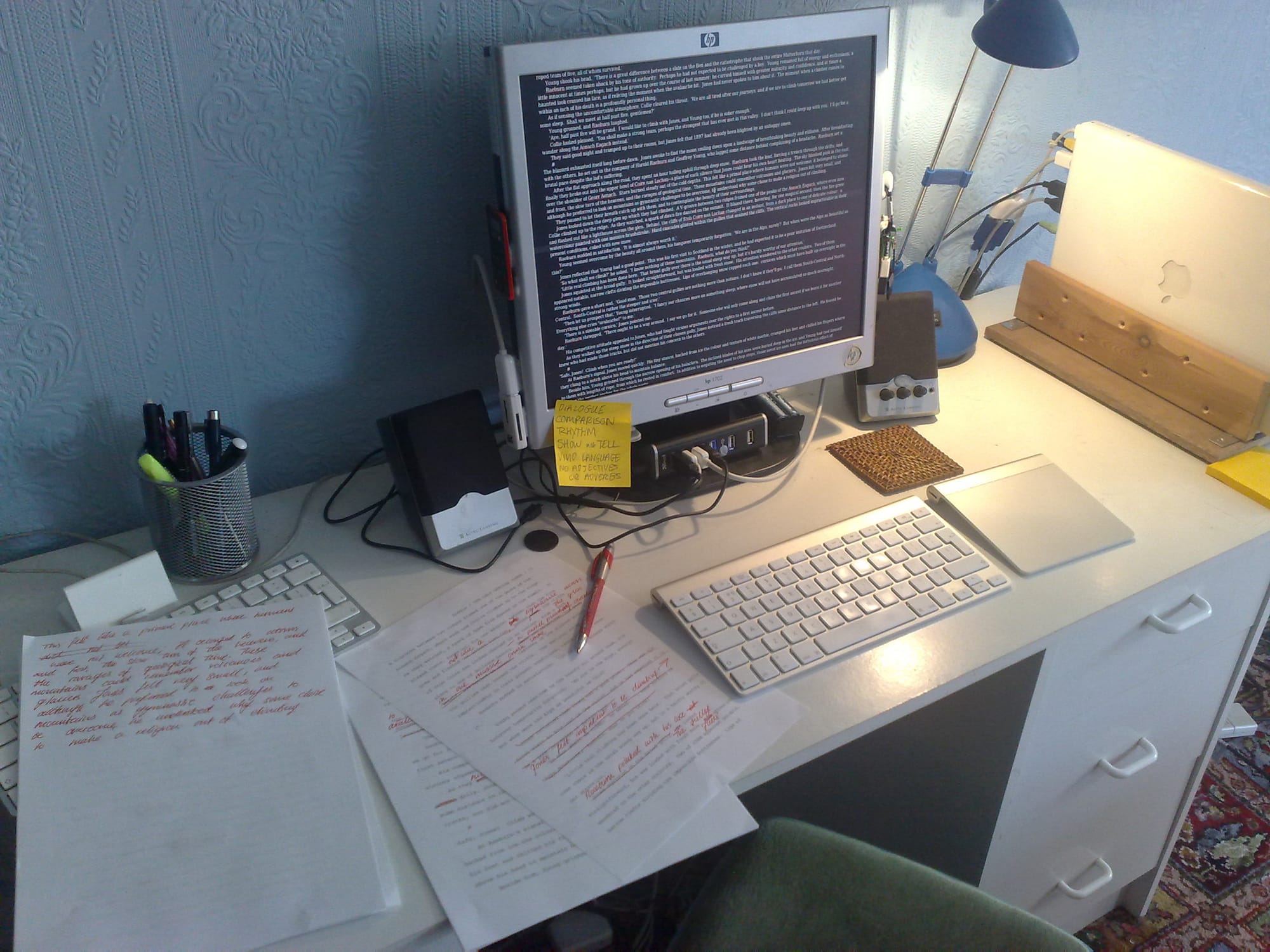
Working tools – and tools of imagination
Although I had used Macs for creative writing for many years, the Mac did not become a professional tool for me until 2014, when I began my present career. I have used both desktop and laptop Macs in the last decade. My favourite computer from this period of my life was, without question, my 2012 MacBook Pro "Classic" – a Millennium Falcon of a Mac that could be upgraded far beyond its original specs. It was also one of the last Apple laptops that could be extensively repaired and maintained by the knowledgeable user.
I kept this Mac going until an upgrade was justified by a combination of a failed internal connector and my performance needs exceeding its capabilities. I keep toying with the idea of buying another one on eBay, souping it up, and keeping it as a backup workstation. I could still do 90% of my job on it even today.
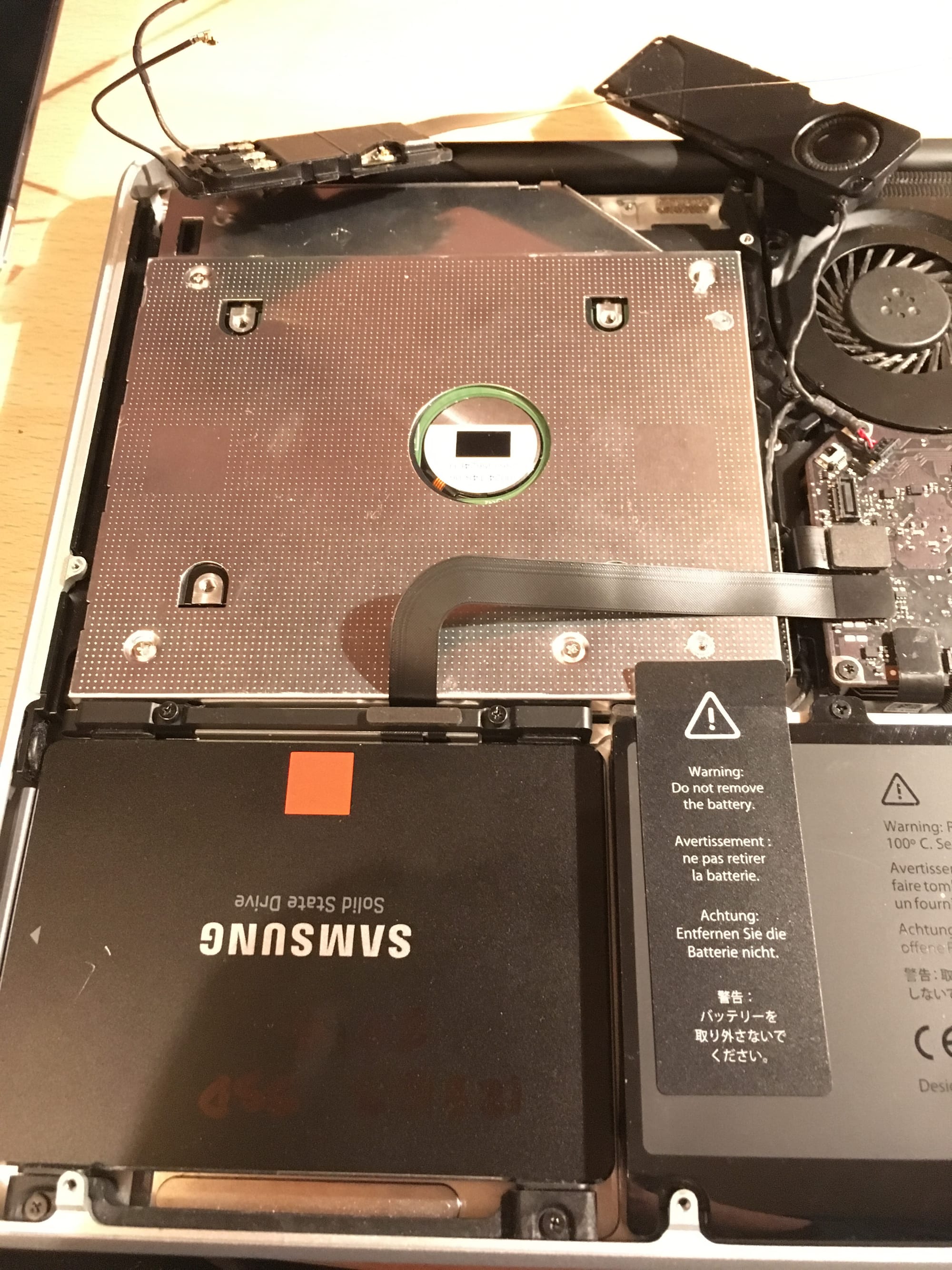
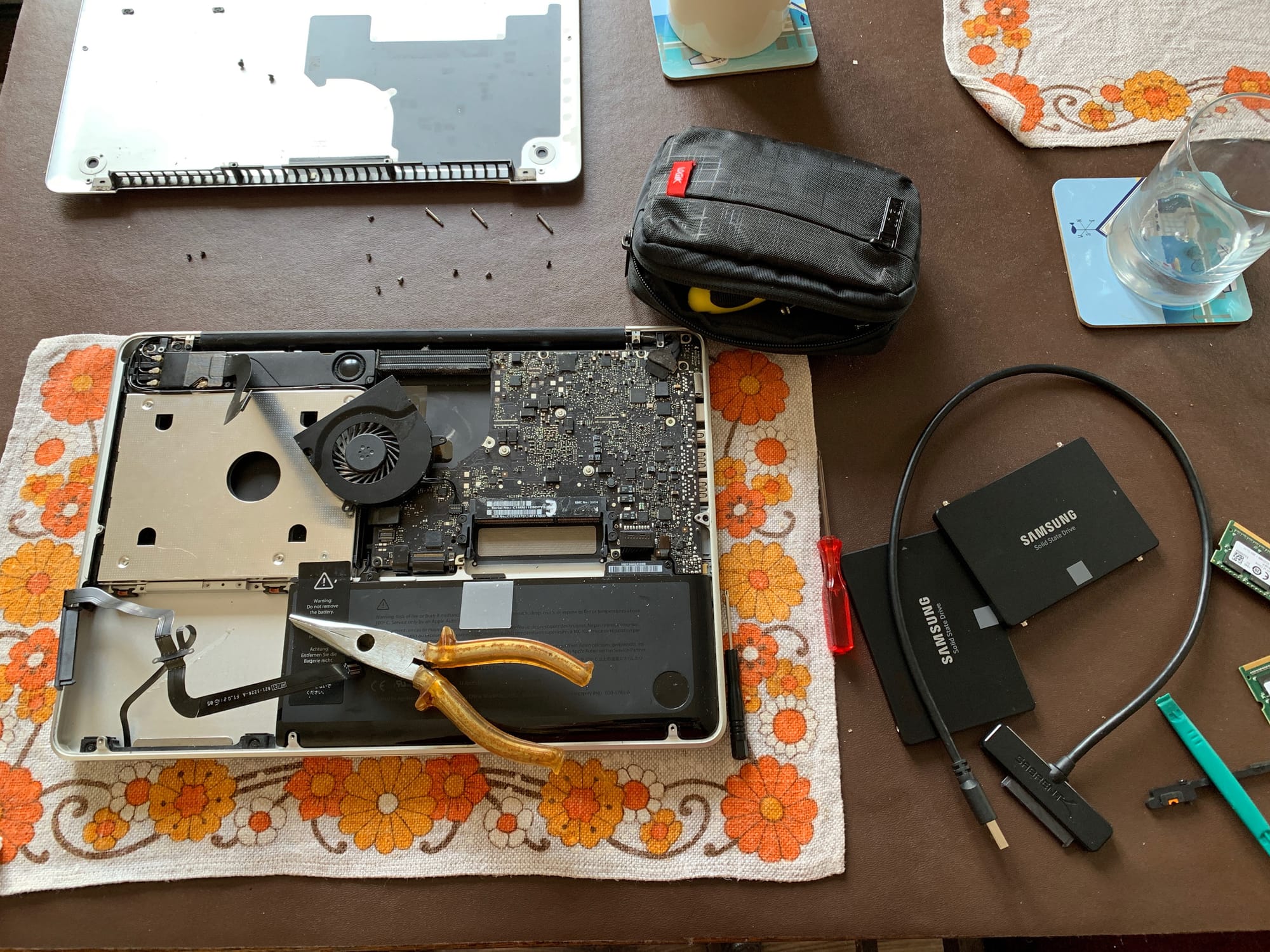
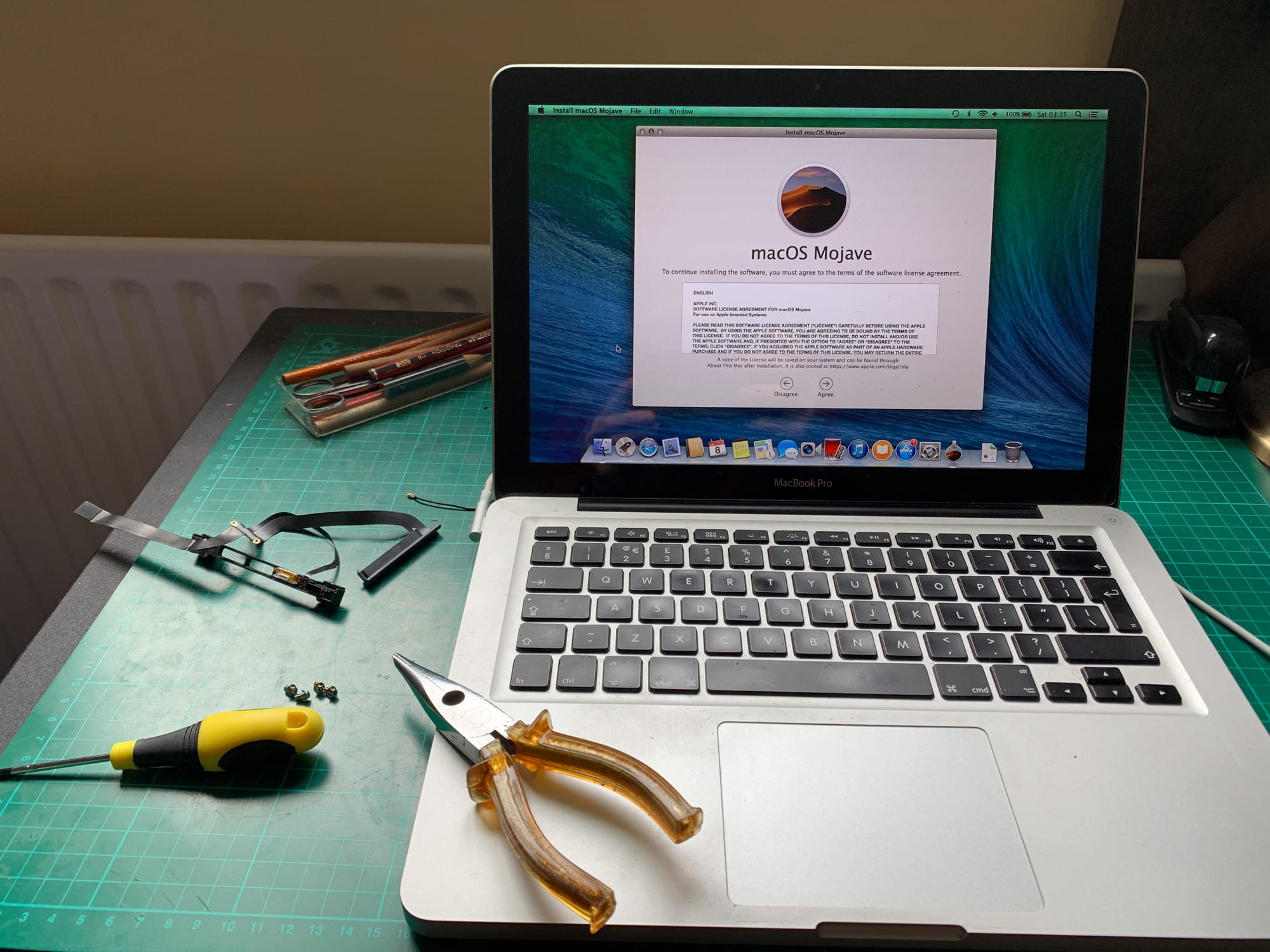
The last Mac that could be stripped down and extensively repaired with hand tools
In 2013, I started to get nostalgic about the 1980s–90s era of vintage Macs I had grown up using – those wonderfully simple, focused, and elegant machines that were so great for writing without distraction. I had been feeling for a while that modern computers had grown complicated and bloated, their operating systems littered with cruft and irrelevant features. Macs were still better in this regard than Windows PCs, but they had drifted a long way from their original purity. So I started browsing eBay. Before long I'd picked up an LC475 (1994) and a Classic (1990). This was in the days when you could still find classic computers like this for paltry sums – a bit more than the £15 I'd paid Dave Sewart 13 years previously, but not that much more. The Apple Extended Keyboard II had already begun climbing in price by this point, though, and the copy I found cost me more than the two computers put together.
After some maintenance and upgrades, these became my creative writing stations. I wrote my novel The Atholl Expedition on the LC475, and several sci-fi short stories on the Classic. This was probably my happiest and most productive period as a fiction writer. I handled the challenge of getting my text files off the vintage Macs and onto my modern one using a combination of Ethernet, FTP, and a device called a Floppy Emu.
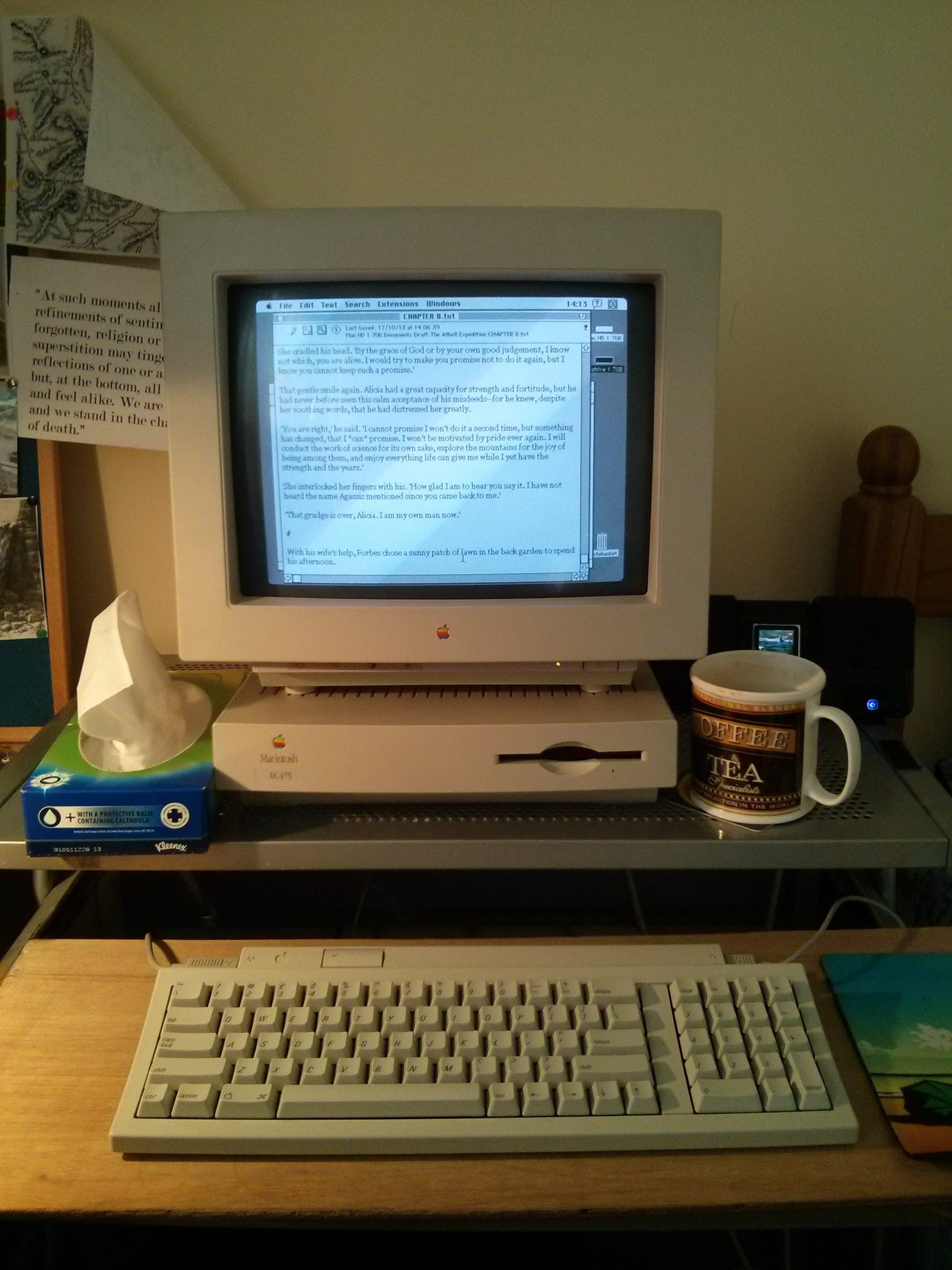
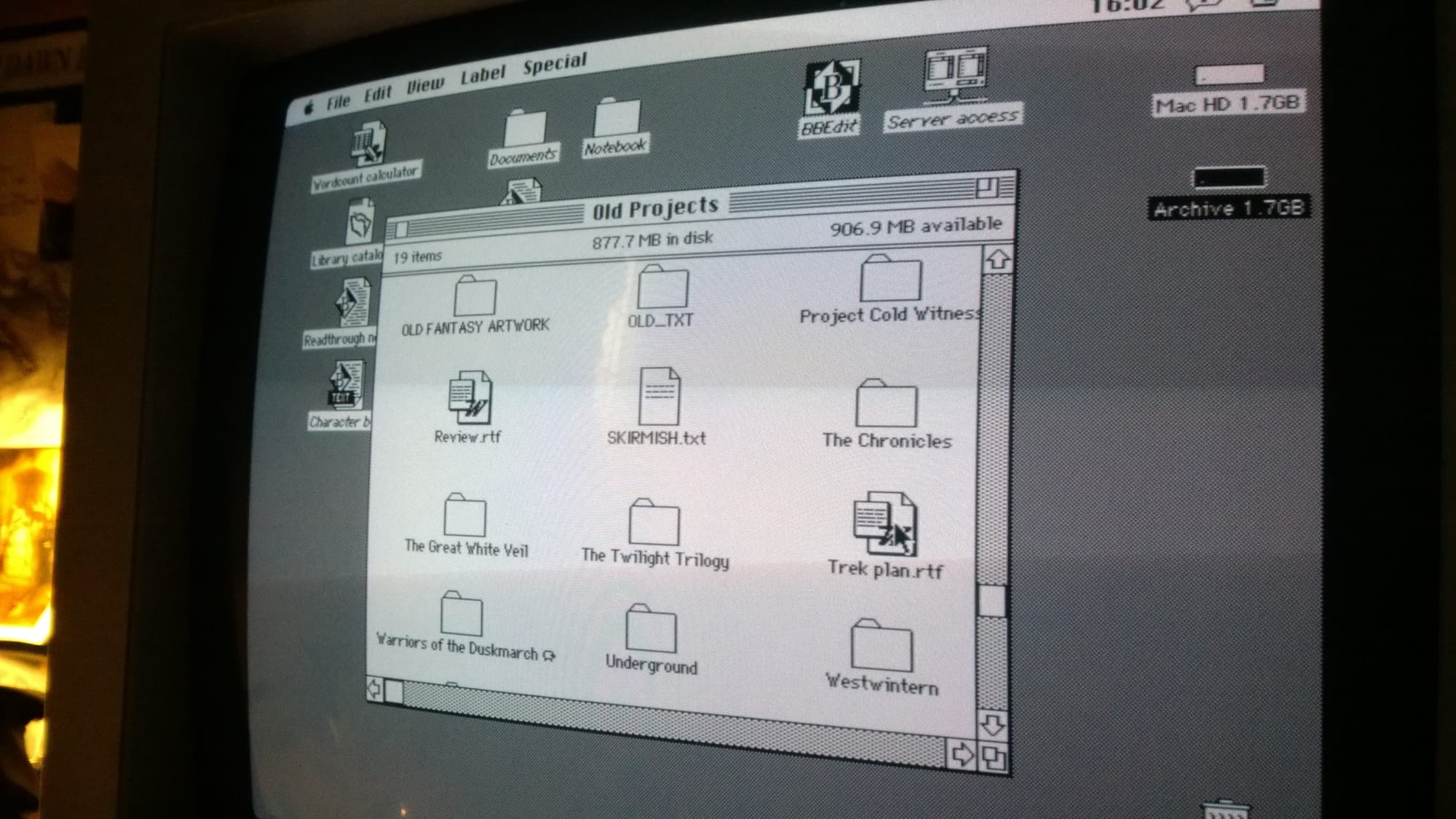
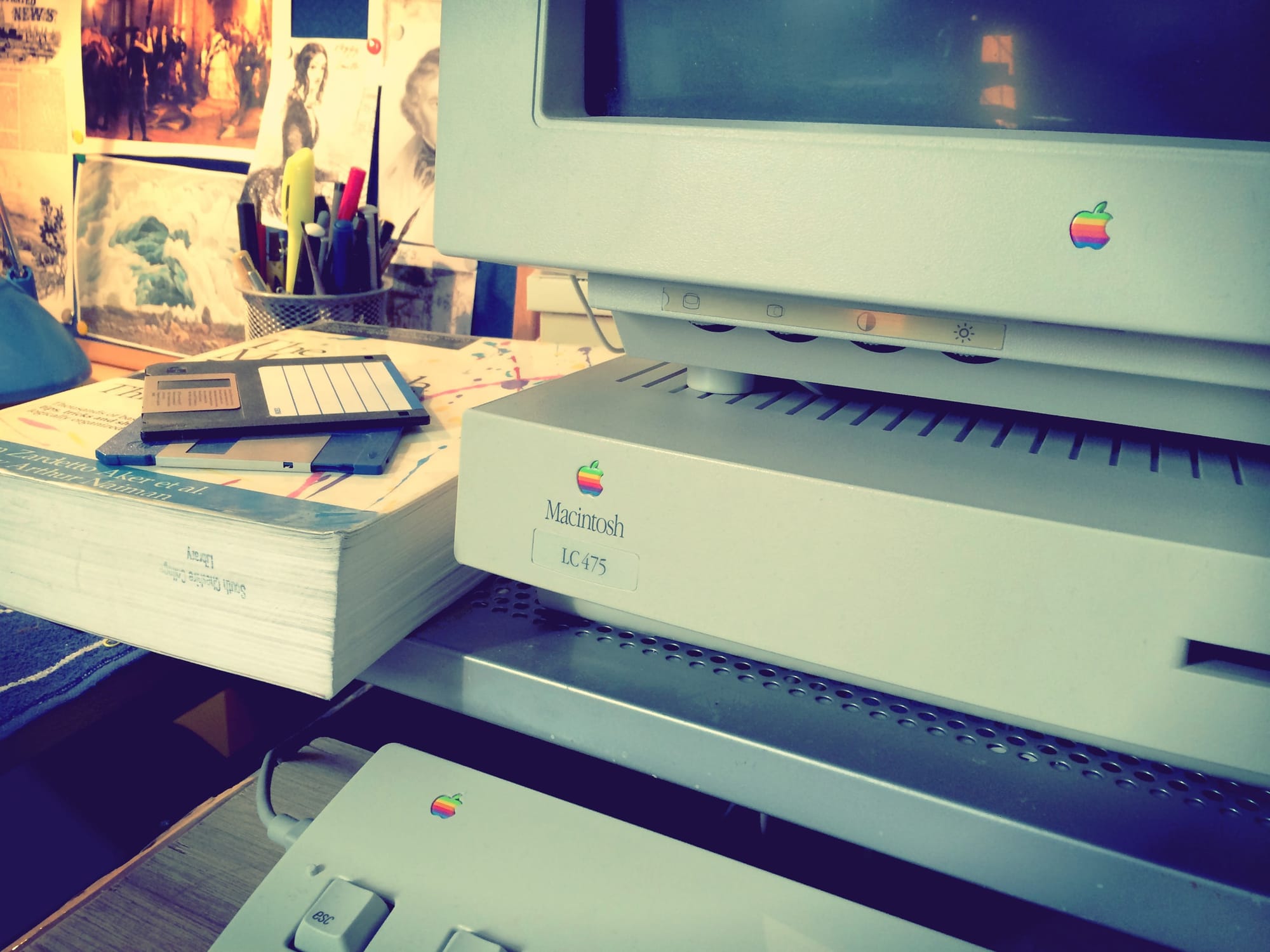
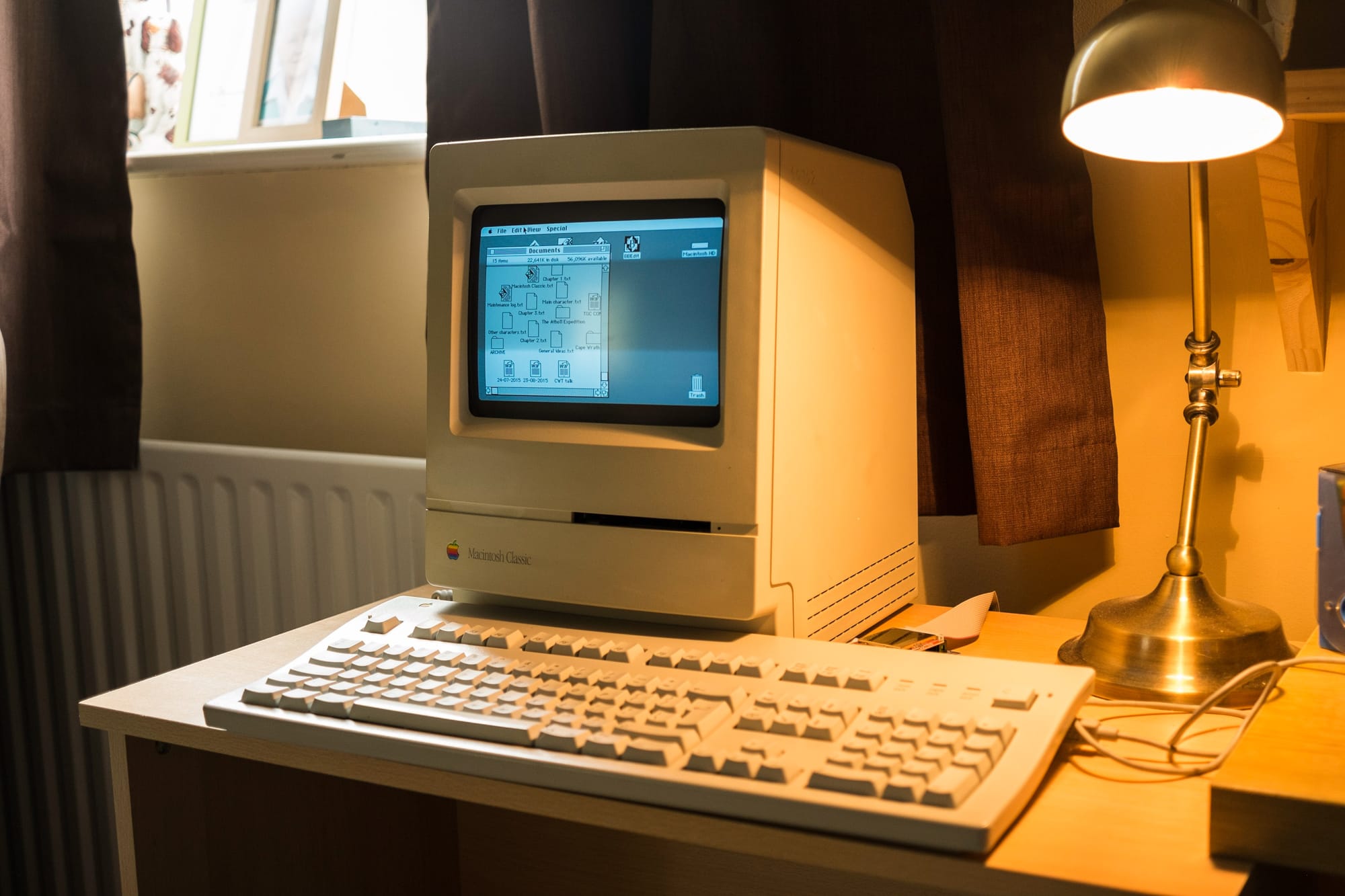
System 7 in glorious crisp black and white, just as the good lord intended
Back then, I fully intended to keep these machines working for the rest of my life. However, the magic wore off eventually. The computers were large and bulky, taking up desk space in a very small home office. There were also maintenance challenges. Both computers required extensive internal work to get into an acceptable functioning state, and I kept a growing list of future maintenance jobs. I got around to replacing all the capacitors on the Classic's motherboard... but the power supply was another question entirely, and I knew I couldn't put it off for long. After a failure, I had to replace all of the LC475's RAM and VRAM with very expensive new old stock components. I also worried about the longevity of the ancient CRT displays and found myself keeping brightness at a minimum to avoid wearing out the phosphor.
I guess it's like being an owner of a classic car. It's fun while it's fun, but maybe when reality bites – that nothing is immortal, that we cannot stay young forever – there comes a point when it's time to move on. This point, perhaps, comes all the sooner with complex and fragile electronic devices. Reluctantly, but glad that I'd enjoyed this living dose of my childhood while I still could, I put the Macs back on eBay. They were snapped up by collectors.
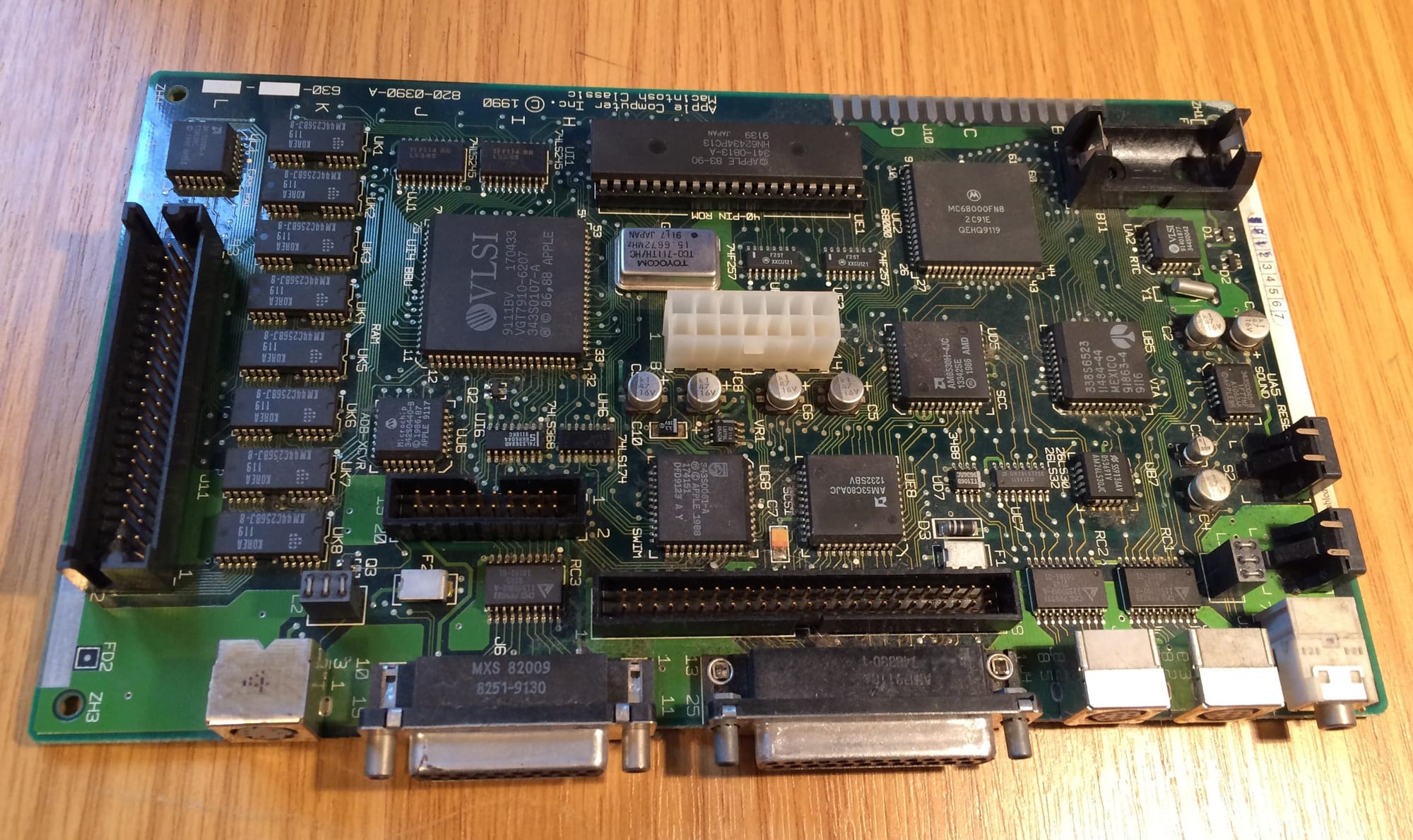
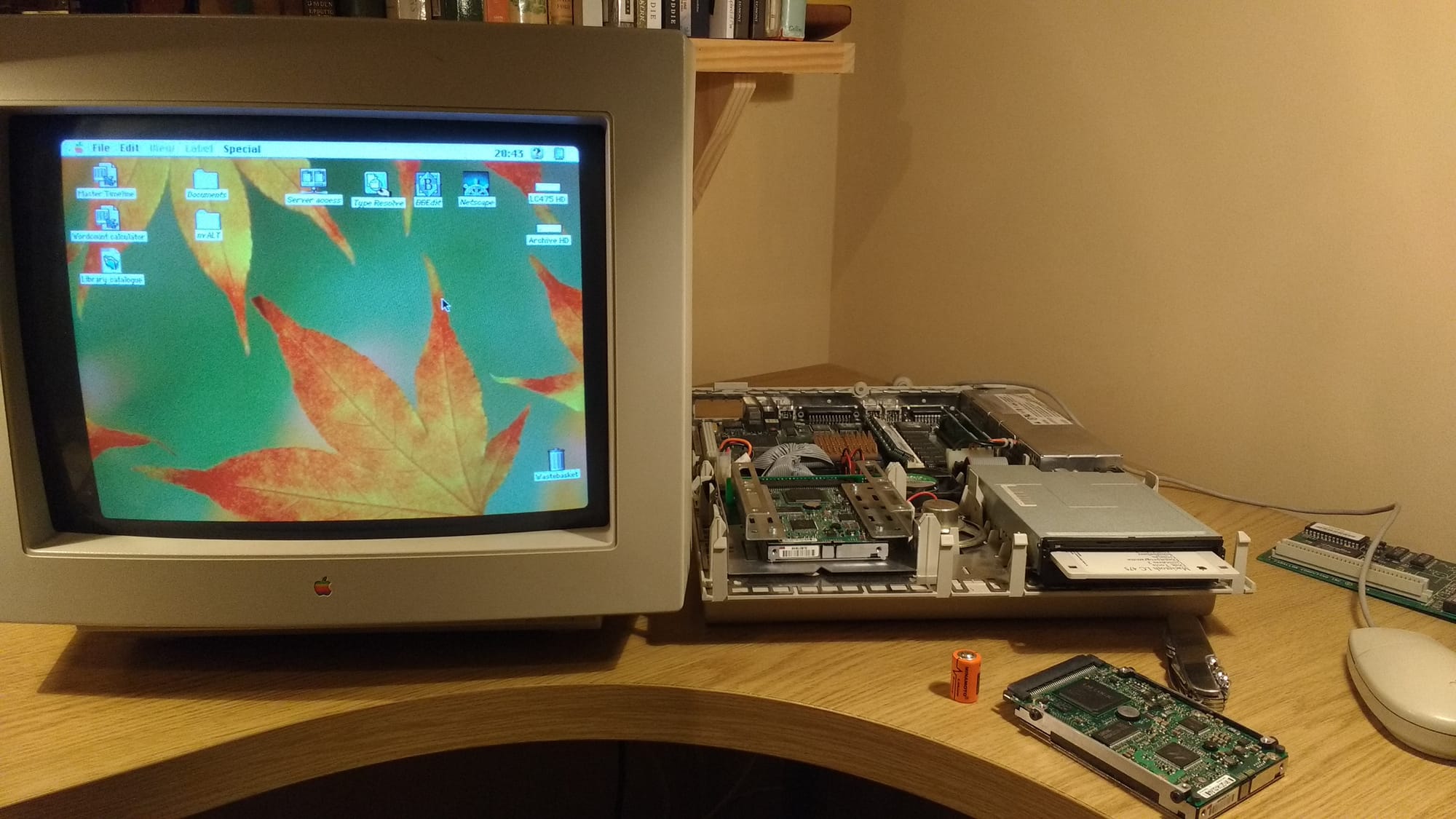
Maintenance sometimes required a soldering iron
There's also the fact that, by 2014, I was moving back towards analogue workflows for my personal writing. I'd rediscovered the joys of writing by hand and typewriter. I bought an Olivetti Lettera 22 that year and am still using it regularly to this day. Although a 1950s-era typewriter doesn't quite scratch the same itch as a 1990s-era Macintosh, as a writing tool it does fundamentally the same job – and will live far longer, requiring far less maintenance.
Today, in 2024, I remain a Mac user (despite a pandemic dalliance with Linux that didn't work out). My current Mac of choice is a MacBook Air M1 hooked up to a Studio Display, as well as a keyboard that I constructed myself to mimic the typing feel of an Extended Keyboard II. In terms of capabilities, this is the best Mac I have ever owned. It can handle any task I throw at it. It's fast and fluid and never slows down. It can be used as a desktop or portable workstation. It's the tool I rely on to make a living.
There are good reasons why I keep using a modern Mac. As I mentioned at the start of this piece, functionally it is a direct ancestor to the Macintosh of the 1980s. Most of the keyboard shortcuts I learnt in early childhood remain identical to this day. Devices come and go like the weather, but typing ⌘-i will still bring up the Get Info dialogue, just as it did in 1991. The Mail app, which I use every day, still works in exactly the same way as it did in 2003. And BBEdit – my environment of choice for professional writing – is to all intents and purposes identical to how it was when I was a student, using it for software development at university. Where else in life can you find consistency like that? It's quite simply beyond price.
However... I can't help feeling that my modern M1 lacks the soul of the ancient, basic machines I grew up using. All the charming quirks and limitations have been smoothed out over the years, leaving a sleek, anonymous, perfectly efficient device without personality or character. Perhaps it's because I know I can't open the hood and tinker to my heart's content any more. Modern Macs are sealed and soldered, almost impossible for the user to service.
Would I want to do my job on an LC475? Of course not. But part of me regrets the fact that we live in a world where simplicity is no longer valued, where complexity and distraction must always increase. Maybe it's capitalism. Maybe it's part of growing up. Either way, I look forward to the next 40 years of the Macintosh.
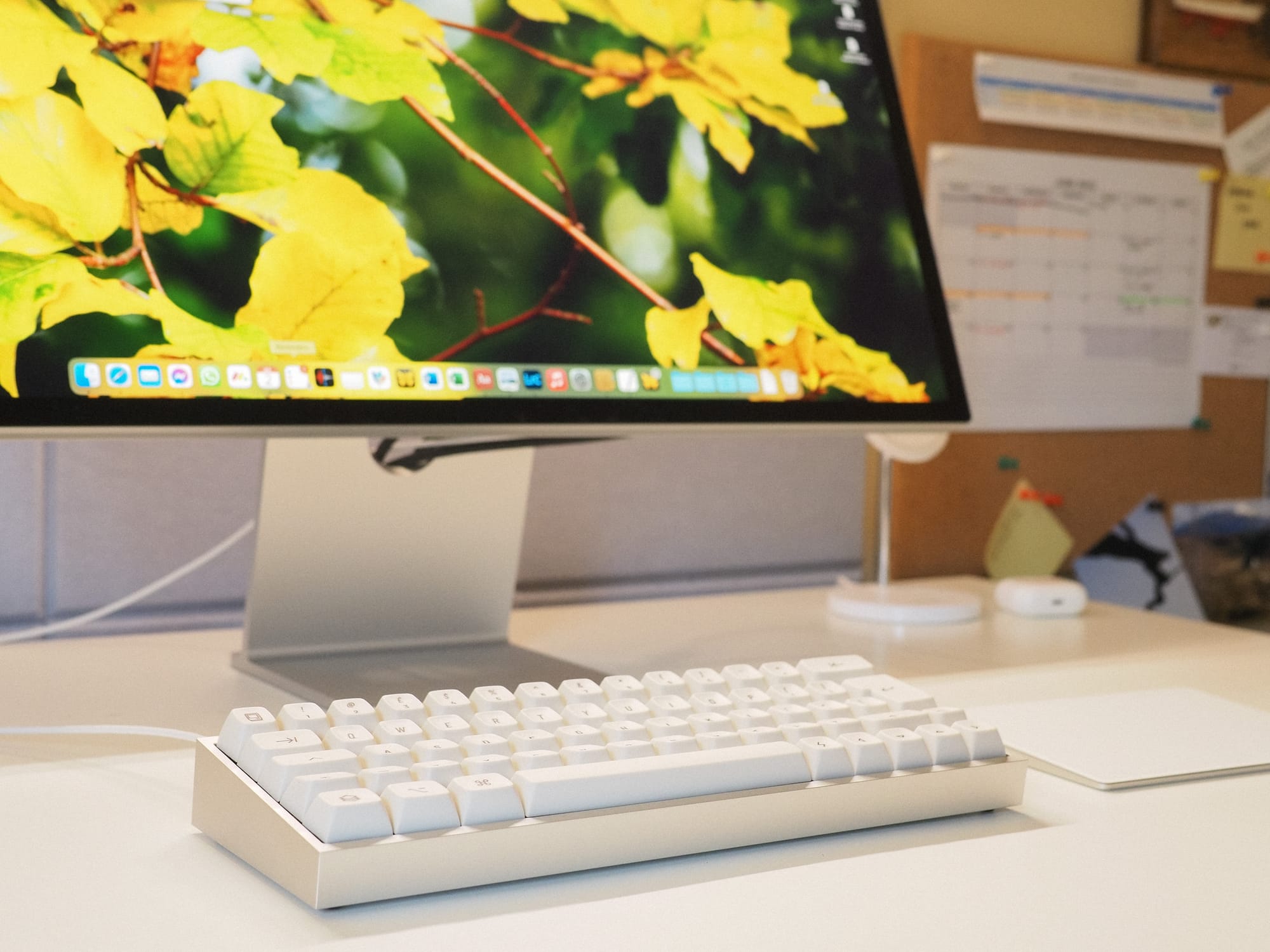
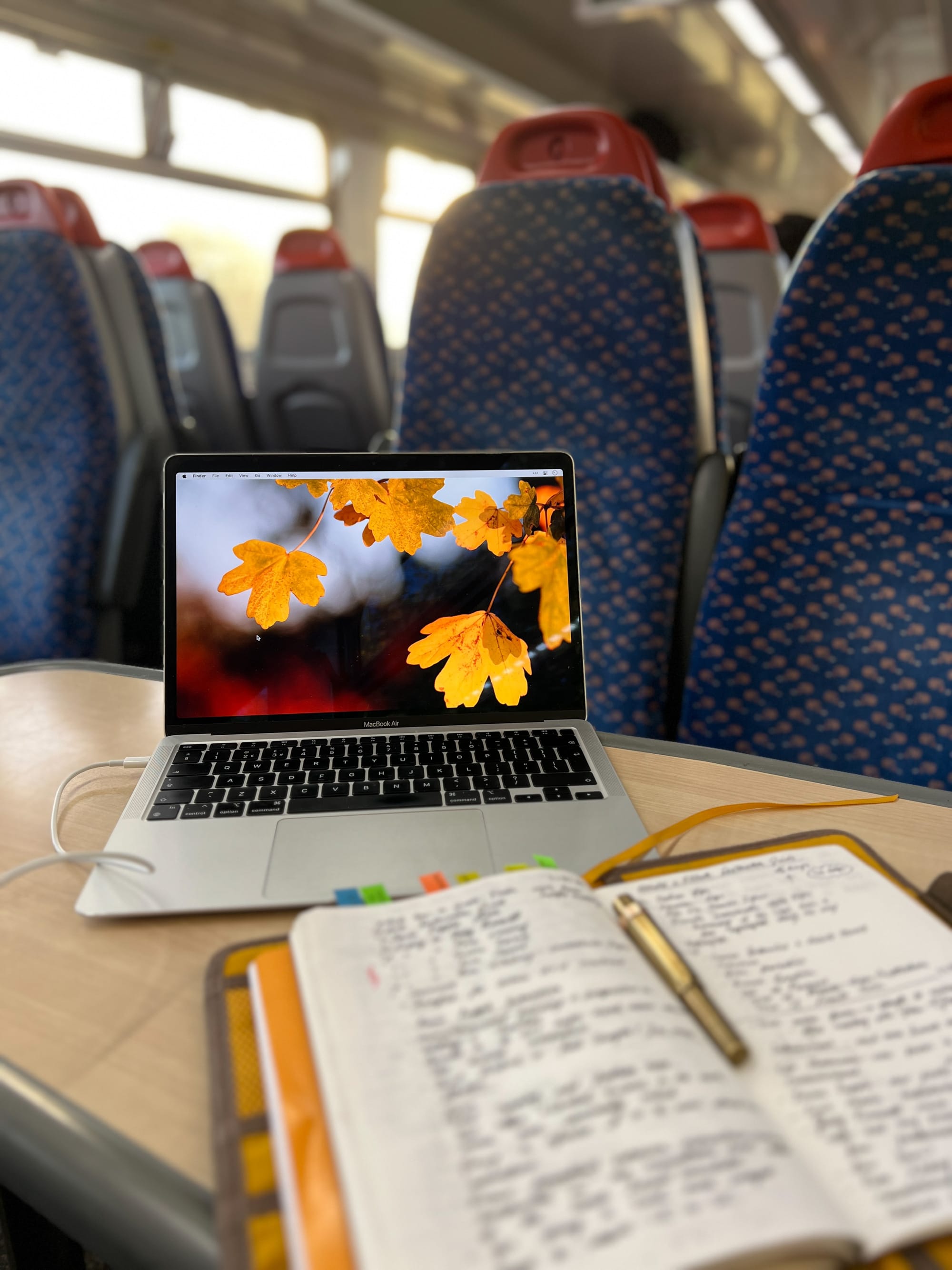
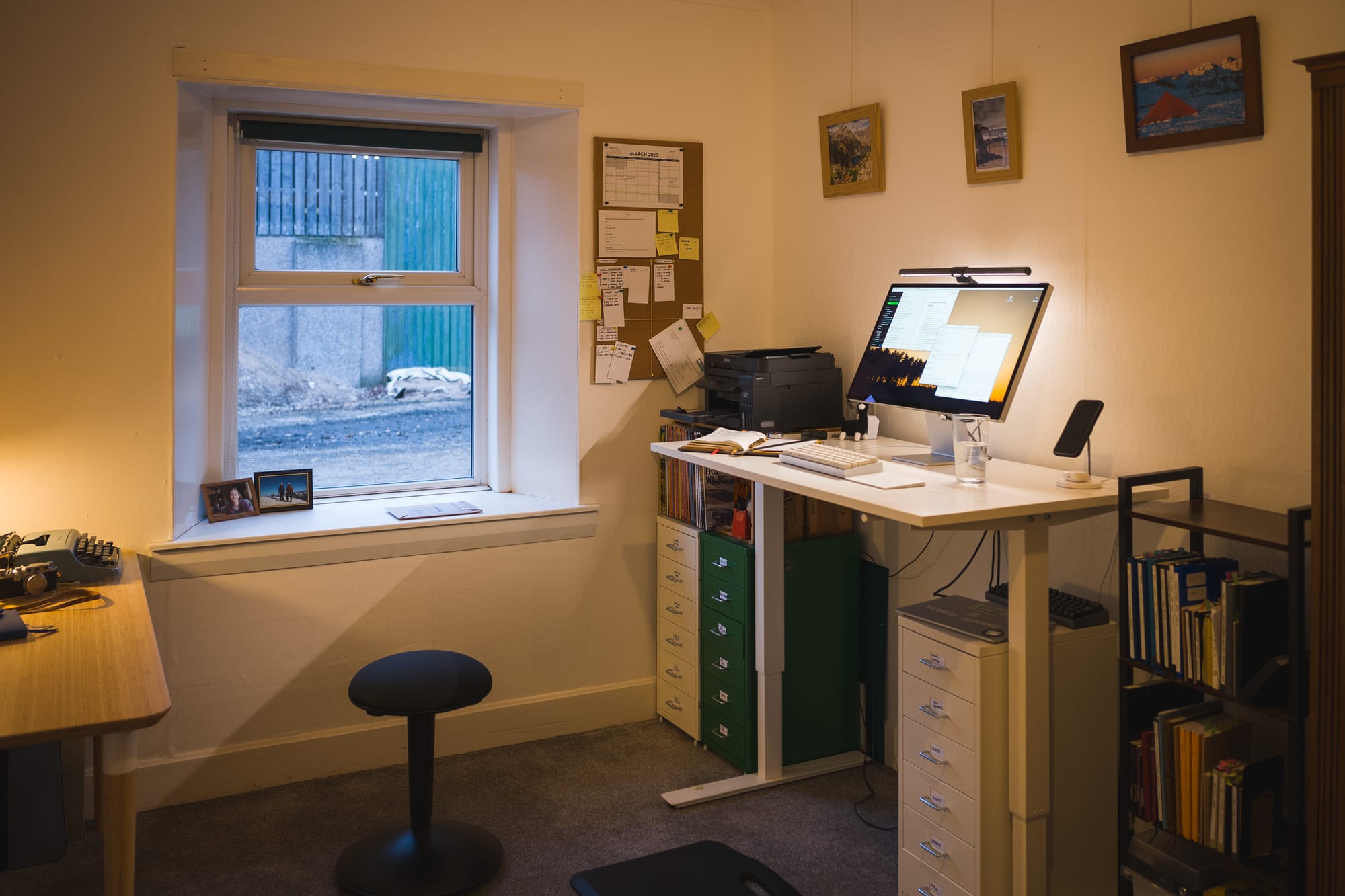
Alex Roddie Newsletter
Subscribe here to receive my occasional personal newsletter in your inbox. (For the fun stuff, please consider subscribing to Alpenglow Journal instead!)


